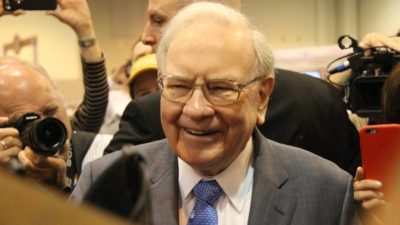Most readers probably wouldn't say no to owning a seven-figure investment portfolio. But getting to a $1,000,000 portfolio of ASX shares is no easy feat. It requires years of patience and discipline to be sure. However, the most important factor that will determine if one can get to a million-dollar portfolio is the harnessing of the power of compounding.
Compound interest was not called the eighth wonder of the world by Einstein for nothing. It refers to earning interest on already-earned interest, and is the only real way most of us can effectively and efficiently build wealth on the share market outside of getting lucky on a moonshot investment.
Even the legendary investor Warren Buffett almost entirely credits compounding as the reason why he is worth ~US$130 billion today. Buffett once said "My wealth has come from a combination of living in America, some lucky genes, and compound interest".
It also explains how his company Berkshire Hathaway Inc (NYSE: BRK.A)(NYSE: BRK.B) is worth US$876 billion right now.
It isn't too difficult to understand how the powers of compounding can exponentially grow your wealth over time.
Let's take a simple ASX index fund like the Vanguard Australian Shares Index ETF (ASX: VAS) to demonstrate. Since its ASX inception in 2009, this exchange-traded fund (ETF) has returned an average of 8.97% per annum (assuming dividends are reinvested).
Compounding: How to get to a $1,000,000 portfolio of ASX shares
Let's say this index fund returns that same rate over the next 40 years (which one should never bank on, as past returns are no guarantee of future success). If one invested just $500 a month into this fund at that rate of return and reinvested all dividend distributions, they would have $97,815 after ten years. Not bad.
But if they just kept at it for another ten years, that $97,815 would grow to $335,660. After another ten, they would have $916,970, which would hit $2.34 million if yet another ten years go by.
That's compounding in action—earning interest on interest on interest. The more time it has, the faster your wealth grows. So, using a simple ASX index fund generating a fairly standard return, you can see how this power of compounding, as well as patience and discipline, can get anyone to a seven-figure ASX share portfolio.
Of course, you can do a few things to juice up your returns as well.
It always helps to invest more. If you can stretch from investing $500 a month to $800, you'd end up with $3.74 million after those four decades instead of $2.34 million.
If you learn about active share market investing and manage to pick out a portfolio of individual shares that return a collective 12% per annum instead of 8.97%, you'd have almost $6 million in shares after those 40 years, rather than $2.34 million.
As such, you can see how this one simple concept of compound interest can work wonders for anyone's wealth and can even get you a $1,00,000 portfolio.









